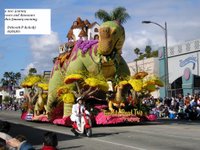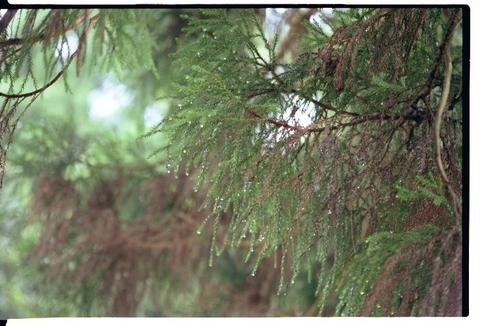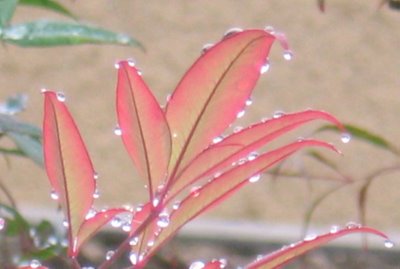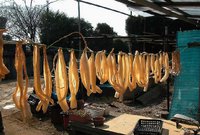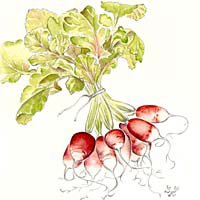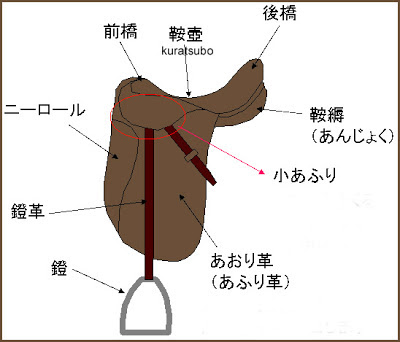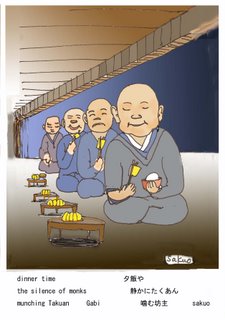- for temari, see below -
:::::::::::::::::::::::::::::::::::::::::::::::::::::::::::::::::::::::::::::::::::::::::::::::::::::
Ryokan Memorial Day (Ryokan-ki 良寛忌)
***** Location: Japan
***** Season: Late Winter (January 6, 1831)
***** Category: Humanity
*****************************
Explanation
Ryokan / Ryookan 良寛 (1758-1831)
(Nickname: Great Fool、Taigu 大愚)
宝暦8年10月2日〔1758年11月2日〕 - 天保2年1月6日〔1831年2月18日〕)
February 18
The dates vary with the calendar.

http://www.hi-ho.ne.jp/mariya/photo/gallery-index.html
He lives on as one of Japan's best-loved poets, the wise fool who wrote of his humble life with such directness.
Ordained as a Soto Zen priest and certified as a master, Ryokan chose to express his practice of the Way through living as a hermit in the countryside, begging for his food as was done by the Buddha and His disciples in ancient India.
Ryokan had no disciples, ran no temple, and in the eyes of the world was a penniless monk who spent his life in the snow country of Mt. Kugami in Northern Japan. He admired most the Soto Zen teachings of Dogen Zenji and the unconventional life and poetry of Zen mountain poet Han-shan.
"Who says my poems are poems?
These poems are not poems.
When you can understand this,
Then we can begin to speak of poetry."
Ryokan never published a collection of verse while alive. His practice consisted of sitting in zazen meditation, walking in the woods, playing with children, making his daily begging rounds, reading and writing poetry, doing calligraphy, and on occasion drinking wine with friends.
Too confused to ever earn a living
I've learned to let things have their way
Too lazy to learn right from wrong,
I laugh at myself, ignoring others
He lived for 20 years in a small hermitage at the slope of
Mt. Kugami 国上山(くがみやま)in Echigo province, Northern Japan, also called Mount Yahiko.
I visited this "Go-goo-An" (Gogo-An, 五合庵) many years ago, way up in the hills, quite far to walk to the nearest village to beg for alms. It is located in the precincts of the Temple Kugami-ji, but you reach it only after quite a lonely walk through the forest. It has just four walls and a roof and must be pretty icecold in winter, since this side of Japan receives a lot of snow every year. There is a spring nearby which is said not to freeze in winter.
Temple Entsuu-Ji in Tamashima 玉島の円通寺
Entsu-ji is famous for being the temple where renowned priest Ryokan,lover of children and noted poet and scholar,trained in his youth. The temple holds the Ryokan Festival and the Ryokan Tea Ceremony annually. Entsu-ji was founded by priest Gyoki in the 8th Century. It is set atop a hill surrounded by beautiful gardens with trees,camellias and azaleas in Tamashima, close to Kurashiki in Okayama prefecture.
Ryokan got his name from the priest of this temple.

http://www.entsuji-kurashiki.jp/
1790 (The second year of Kansei)
After Ryokan finished his hard training, the Reverend Kokusen gave him a walking stick and a piece of paper, which showed he was a real priest.The paper said: "Ryo seems foolish, but the road is very wide".
And in this we can see the Chinese characters "Ryo良"(Good) and "Kan寛"(Wide)
In Memory of Ryokan, artists of Tamashima produce a nice Ryokan Daruma doll.

You can read more about Ryokan san in my story here
. Ryokan san and Tamashima Daruma
Gabi Greve
Temples where Ryokan walked in Bitchu Province
http://www.kurashiki.co.jp/gokaji/index.html
*****************************
Worldwide use
*****************************
Things found on the way
An old grave hidden away at the foot of a deserted hill,
Overrun with rank weeks growing unchecked year after year;
There is no one left to tend the tomb,
And only an occasional woodcutter passes by.
Once I was his pupil, a youth with shaggy hair,
Learning deeply from him by the Narrow River.
One morning I set off on my solitary journey
And the years passed between us in silence.
Now I have returned to find him at rest here;
How can I honor his departed spirit?
I pour a dipper of pure water over his tombstone
And offer a silent prayer.
The sun suddenly disappears behind the hill
And I’m enveloped by the roar of the wind in the pines.
I try to pull myself away but cannot;
A flood of tears soaks my sleeves.
source : Poems of Ryokan
:::::::::::::::::::::::::::::::::::::::::::::::::::::::::::::::::::::::::::::::::::::::::::::::::::::

Print: Tsukioka Yoshitoshi 1839-1892
carrying my monk's bowl,
I walk to the village
to beg for my daily meal.
- Compiled by Isabelle Loverro -
Joys of Japan, 2012
.......................................................................
あけ窓のむかしをしのぶすぐれ夢
ake mado no mukashi o shinobu sugure yume
at the open window
the past comes back
better than a dream

Open window Suzuki Harunobu (1725-1770)
*****************************
HAIKU
良寛忌 東京駅で 友を待つ
Ryokan Memorial Day -
waiting for friends
at Tokyo station
You have to know the millions of people thronging through this central station every day to imagene the hustle and noise there.
Gabi Greve, 1994
winter solitude ...
nobody knocked at my door
today
Gabi Greve at GokuRakuAn Hermitage, 1998
:::::::::::::::::::::::::::::::::::::::::::::::::::::::::::::::::::::::::::::::::::::::::::::::::::::


- Shared by Ron Moss -
Joys of Japan, 2012
:::::::::::::::::::::::::::::::::::::::::::::::::::::::::::::::::::::::::::::::::::::::::::::::::::::
Ryokan ceremony
at Entsuu-Ji temple
the scent of tea
a loft of pidgeons
above the statue of Ryokan
plop! plop!
Geert Verbeke
Read more of Geert's haiku about Ryokan here:
http://happyhaiku.blogspot.com/2004/01/friends-geert-verbeke.html
xxxxxxxxxxxxxxxxxxxxxxxxxxxxx
Ryokan's haiku about fallen leaves
The leaves are falling
Just enough to make a fire―
A gift of the wind!
http://happyhaiku.blogspot.com/2004/12/fallen-leaves-ochiba.html
oo oo oo oo oo
hibi hibi ni shigure no fureba hito oinu
day after day after day
only cold drizzle with snow <>
I am getting older
More about Ryokan and his haiku
http://groups.yahoo.com/group/Darumasan-Japan/message/630
xxxxxxxxxxxxxxxxxxxxxxxxxxxxxxxxx
Ryokan was famous for his love of playing with children in the village. In the top picture you see a round ball (temari 手まり、手毬), one of his favorite toys.
紙鉄砲おしえて撃たれ良寛忌‥‥ 下村 英子
hit by the paper gun
I fall down -
Ryokan Memorial Day
Shimomura Eiko
http://www.cf.city.hiroshima.jp/bunka/1/dantai%20list/haiku-37.html
xxxxxxxxxxxxxxxxxxxxxxxxxxxxxxxxxxxx
Ryookan-ki -
her toys forgotten
in the attic
Gabi Greve
xxxxxxxxxxxxxxxxxxxxxxxxxxxxxxxxxxxxxxxxxxxxxxxx
temari 鞠(まり)-手毬(てまり)hand ball, rag ball
quote
Temari (手まり) balls
are a folk art form that originated in China and was introduced to Japan around the 7th century A.D. It was quite popular in the Heian period. "Temari" means "hand ball" in Japanese. Embroidered balls may be used in handball games.
Historically, temari were constructed from the remnants of old kimonos. Pieces of silk fabric would be wadded up to form a ball, and then the wad would be wrapped with strips of fabric. As time passed, traditional temari became an art, with the functional stitching becoming more decorative and detailed, until the balls displayed intricate embroidery. With the introduction of rubber to Japan, the balls went from play toys to art objects, although mothers still make them for their children. Temari became an art and craft of the Japanese upper class and aristocracy, and noble women competed in creating increasingly beautiful and intricate objects.
Tradition
Temari are highly valued and cherished gifts, symbolizing deep friendship and loyalty. Also, the brilliant colors and threads used are symbolic of wishing the recipient a brilliant and happy life. Traditionally, becoming a craftsman in Japan was a tedious process. Becoming a temari artist in Japan today requires specific training, and one must be tested on one's skills and technique before being acknowledged as a crafter of temari.
Traditionally, temari were often given to children from their parents on New Year's Day. Inside the tightly wrapped layers of each ball, the mother would have placed a small piece of paper with a goodwill wish for her child. The child would never be told what wish his or her mother had made while making the ball.
Alternately,
some balls contained "noisemakers" consisting of rice grains or bells to add to the play value. It is said that traditional temari were wrapped so tightly they would bounce.
Temari are also known as "gotenmari."
source : wikipedia
. gotenmari, goten mari 御殿まり Goten decoration ball .
"Ball of the Palace" - Ornamental Ball -
. Gotenmari from 由利本荘市 Yuri Honjo Town, Akita .
. Edo shokunin 江戸の職人 Edo craftsmen .

temarizukuri 手まり、手毬づくり making Temari balls
Professionals in Edo made three sizes, small, middle and large (almost 20 cm in diameter).
They used silk thread of five different colors. Sometimes they put some shells inside so they would make a sound when thrown in the air.

.......................................................................

. 喜多川歌麿 kitagawa Utamaro(1753 - 1806) .

鈴木春信 Suzuki Harunobu (1743 - 1807)
. Join the Ukiyo-E friends on facebook ! .
.......................................................................
More links about the wonderful TEMARI balls.
http://www2.nsknet.or.jp/~kid/mari1.html > Click the NEXT button at the end for more

From Kaga Province 加賀手まり
http://www.hi-ho.ne.jp/mariya/temari-index.html
. Ishikawa Folk Art - 石川県 .

CLICK for many more photos !
.................................................................................
. Higo temari 肥後てまり - Kyushu .
. Nanbu himemari 南部姫毬 princess hand ball from Nambu . - Aomori
kukemari くけまり / くけ毬 hand balls from Hachinohe
.................................................................................
. Nagano Folk Art - 長野県 .
Matsumoto temari 松本手まり temari balls from Matsumoto

- quote -
Matsumoto-temari are folkcraft balls decorated with yarn, made in the city of Matsumoto, Nagano Prefecture. The balls are decorated using scraps of yarn from weaving to create various designs.
In the past, the balls were used as childrens o-tedama (beanbags), but then a way was found to make them bounce, and henceforth they became temari (handballs). Nowadays some of the balls have bells inside them that make a lovely sound when the ball is bounced, and most are used as interior decorations.'
Matsumoto Handball Preservation Society
- source : www.jnto.go.jp/eng -
.......................................................................
Shimane 島根県
. ito temari 糸てまり string handballs from Matsue .
- - - - - ai-temari 藍てまり made with Indigo threads
...........................................................................................
bin temari びん手まり temari in a bottle
There is also a custom in the town of Aishoohoo in Shiga prefecture,
to give a temari ball made by the mother, put in a glass bowl with a cover, to her daughter when she gets married. The young bride can now look at the present when she is in doubt or has problems with her husband, since the ball will teach her "to be round" and the glass will teach her "to see through the difficulties" in her marriage.
They are difficult to make, like a "ship in a bottle".
After the temari is completed, the stuffing inside is taken out, the loose ball put in the bottle and then stuffed again with cotton wool until it is round.
Below is a one with cherry blossoms, sakura
散る桜残る桜も散る桜
chiru sakura nokoru sakura mo chiru sakura
scattering cherry blossoms
remaining cherry blossoms also become
scattering cherry blossoms

There is even a museum for these temari in a glass bowl in the town now.
愛荘町立愛知川びんてまりの館 (滋賀県愛荘町)

:::::::::::::::::::::::::::::::::::::::::::::::::::::::::::::::::::::::::::::::::::::::::::::::::::::
Darumari ”だる毬”Daruma Temari
A set you can buy and make your own ball, with a Daruma pattern.
だるちゃんプロデュース / だるまぐねっと

They also make other things with Daruma
Daruable 貴山圭子(だるチャン)

. Keiko Kiyama 貴山圭子 Daruchan
:::::::::::::::::::::::::::::::::::::::::::::::::::::::::::::::::::::::::::::::::::::::::::::::::::::
. tsurushibina つるし雛 / 吊るし雛 small hanging hina dolls .

shippoo, shichihoo mari 七宝まり / 七宝鞠
hand ball with seven treasures
Just like the auspicious rings (wa 輪) are connected, so should be the peace and harmony with people (wa 和) be connected for the girl. Added with the wish for a good marriage and many children, also good family business.
- - - - -
temari 鞠(まり)-手毬(てまり)"hand ball"

An auspicious symbol for the New Year and a beloved toy of all small kids. May the girl grow up "round" without any problems, and have a fulfilled life.
*****************************
Related words
***** Temari Balls, decorative hand balls (temari)
Ball catching song, ball bouncing song
(temari uta 手毬歌, 手毬唄、てまりうた)
kigo for the New Year
***** . kemari 蹴鞠 kick ball game .
:::::::::::::::::::::::::::::::::::::::::::::::::::::::::::::::::::::::::::::::::::::::::::::::::::::
[ . BACK to DARUMA MUSEUM TOP . ]
[ . BACK to WORLDKIGO . TOP . ]
- #ryokan #temari #mari #handball -
:::::::::::::::::::::::::::::::::::::::::::::::::::::::::::::::::::::::::::::::::::::::::::::::::::::

